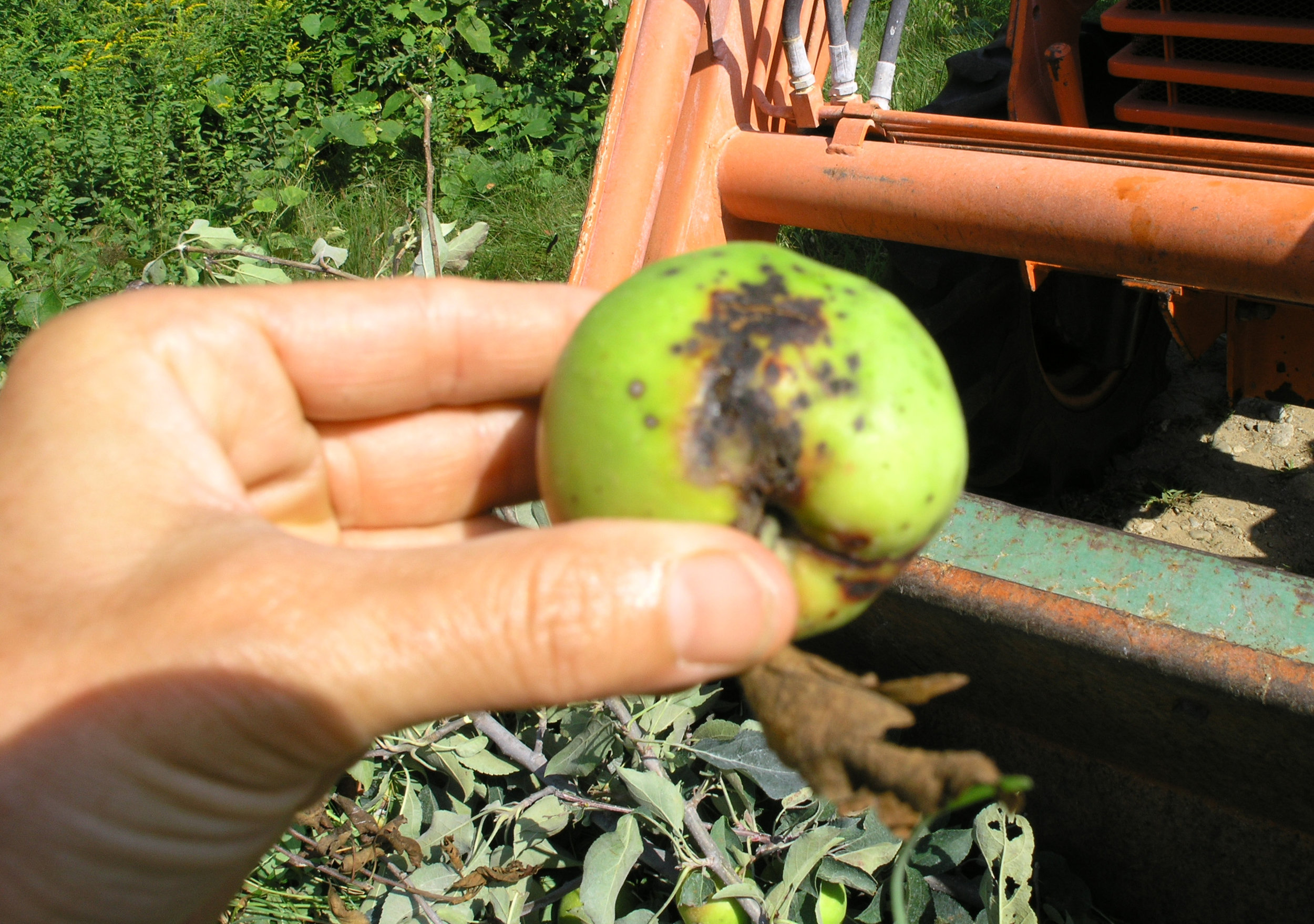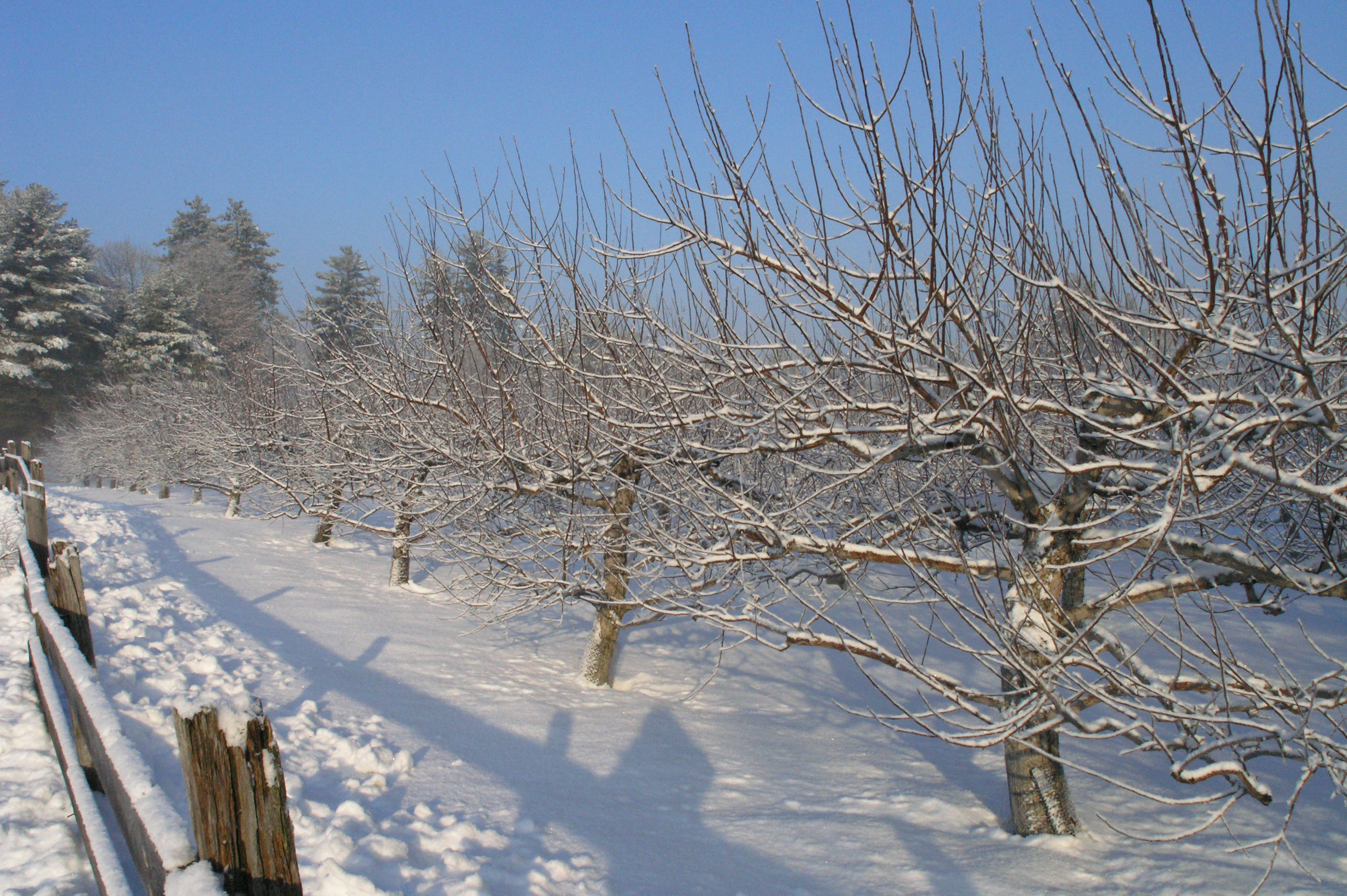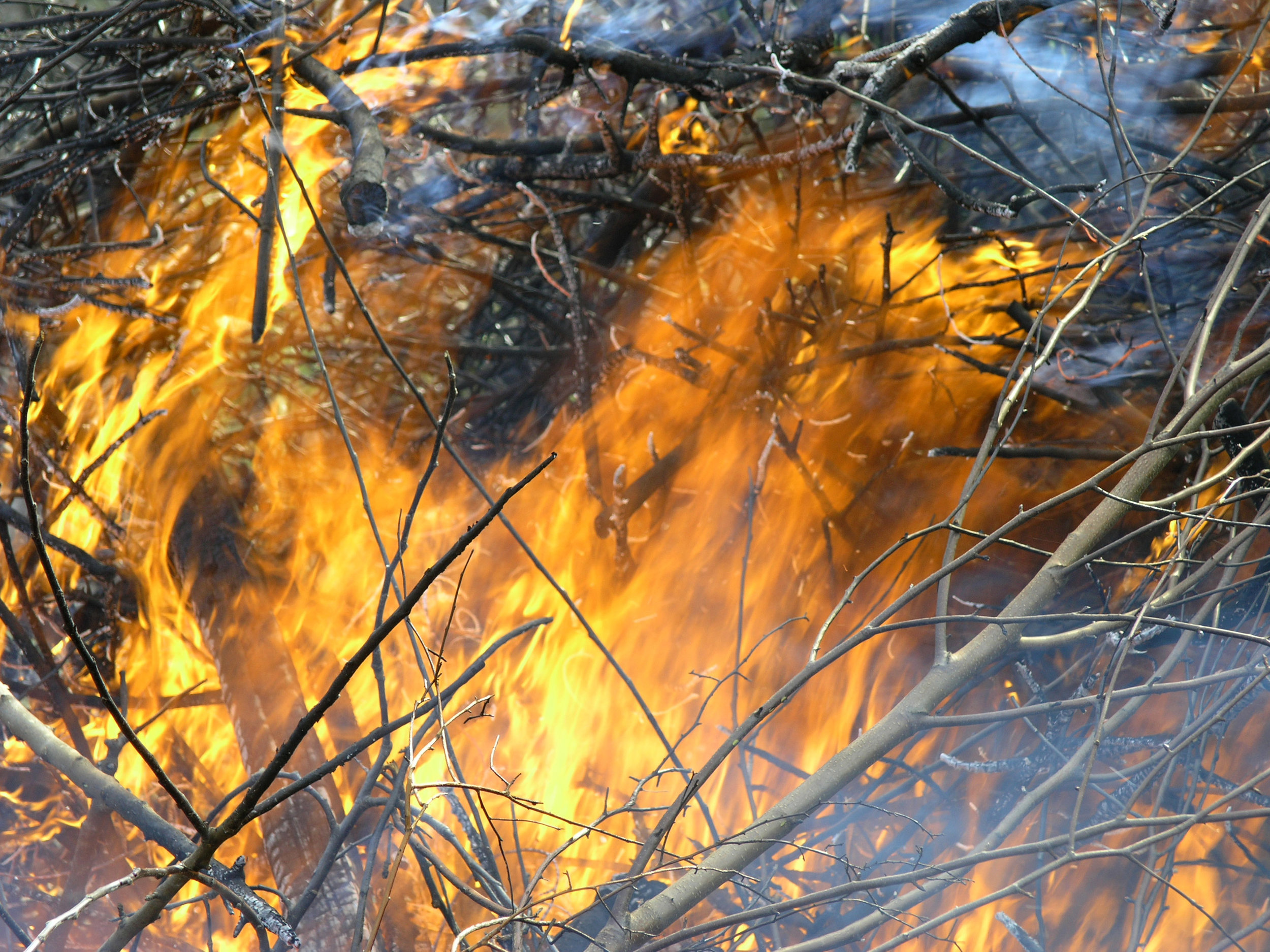“The greatest fine art of the future will be the making of a comfortable living from a small piece of land.” —Abraham Lincoln
When I am anxious or out of balance, which is often these days, I turn to weeding. I can always find weeds on the farm. The weeds are tenacious; they want to grow. One definition of a weed is a plant growing in the wrong place. We have lots of plants growing in the wrong places. Most of them need to be dug up. On the farm ‘to do’ list, weeding sits in almost every category: blueberries, raspberries, rhubarb, asparagus, around the apples, pears, and peach trees, the hoop house, and the kitchen garden.
Sitting on the ground, along the rows of blueberries, as if at a banquet table, each of us brings our favorite utensil. Ariel’s preference is the triangular Korean hoe, Holly prefers a claw, and I use a pink-handled small trowel.
Holly weeding young blueberry bushes on a cold and windy day.
We yank, we pull, we dig, leveraging our tools into thick mats of grasses, and tug some more. Grass clumps lift out—these get a hearty shake sending the worms and the soil attached to the roots back into the row, while whatever is left finds new life in the compost pile.
Frederic G. Cooper, 1917, U.S. Food Administration
My mind is occupied by thoughts of farms and food. The largest apple grower in our town depends on two migrant workers, but he has yet to hear from the embassy about their arrival. The commercial vegetable market in California doesn’t know how they will manage not only because of their dependence on migrant workers, but the chain of supply, the connective system, the trucks, the transport, the weigh stations, the middle places where all the packaging happens, are facing their own challenges. Farmers in Florida are plowing under vegetables, and in the Midwest, dairies are dumping fresh milk, though stores limit the amount customers can buy. Small farms feel the pressure, too. The restaurant that bought fifty pounds of greens a week is now closed, and many farmer’s markets have been canceled.
Abraham Lincoln promoted the cultivation of land after the bloodshed of the Civil War. During and at the end of World War II, the American Victory Garden movement created sustainability and health. England had their own movement, Dig for Victory. Maybe the restoration of the world’s psyche after times of great suffering was in part due to the return of our connection to the soil, to food. Maybe, it is a time to build more resiliency into our communities. Food is basic to our needs along with water, clean air, and shelter. We need to return to the basics and provide this for all people on the planet. Let’s give up fighting for causes and beliefs that only divide us. Let’s rally around what truly supports us.
I think about these things, and obviously oversimplify them, while I grab a small clump of grass, and ease out its long root system, pure white and thick, from among the blueberry’s dark, thin roots. Pull too hard and the root snaps. Only by teasing gently but firmly, can I coax out a foot-length root, with grass nodules every few inches, to release its hold. Of course, some weeds will quickly regrow, we don’t get them all, but if we don’t weed, the mass of growth under the blueberry plants will rob the bushes of nutrients. We weed in order to ease the competition for resources, to encourage a bountiful crop.
Weeding is not glamorous work and It doesn’t save lives, but it offers a connection to something trustworthy that helps keep me balanced. I know not everyone has access to weeds, but even in a city, we can break for a moment, see a bit of earth or touch a tree, and know this is all part of us. Amid slicing an apple, or washing salad greens, we can pause within our anxiety, and connect to this gift from the earth, the ground that sustains us.
This morning’s surprise: blown by the wind from a pile of old materials outside my studio.
.














